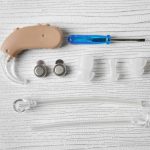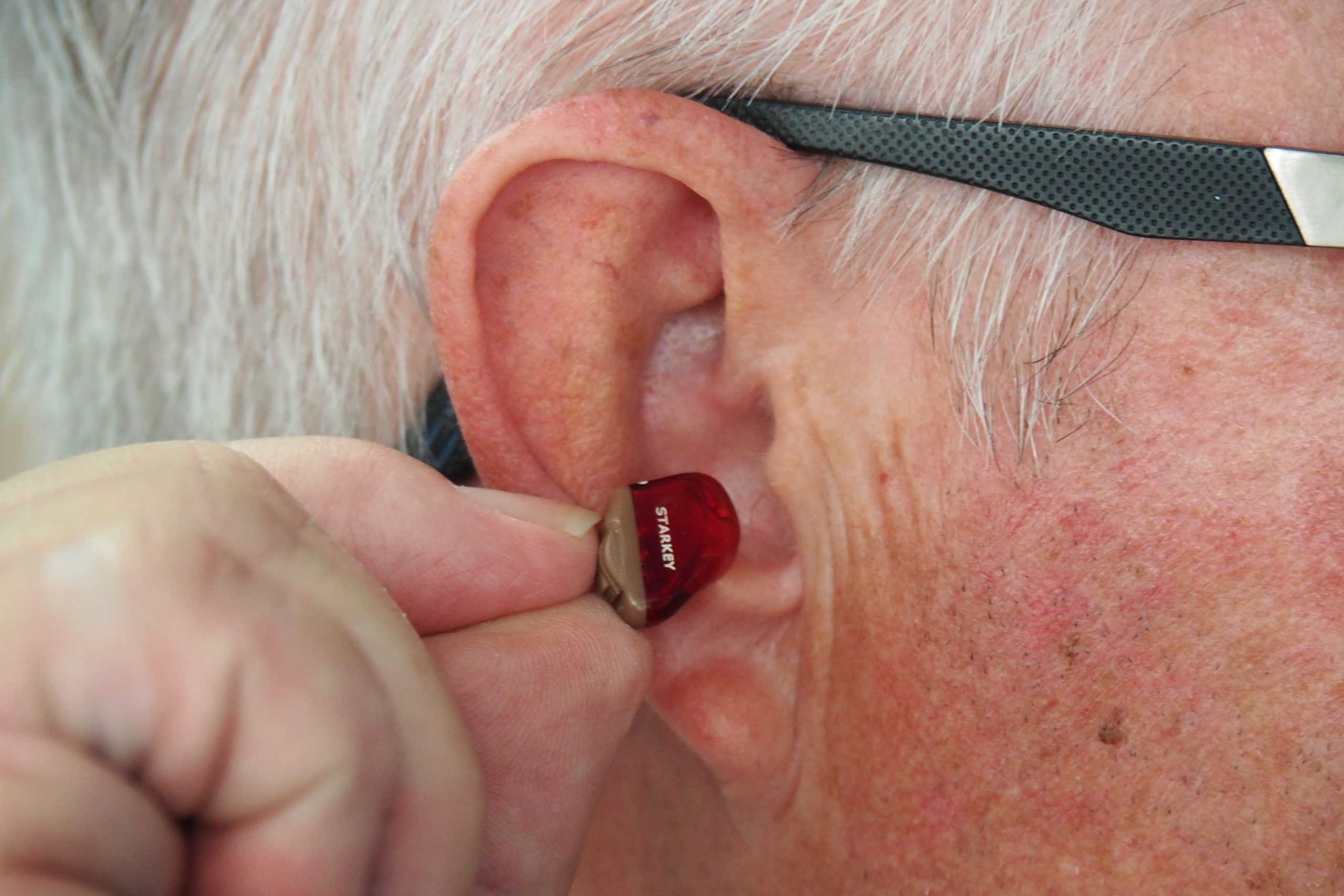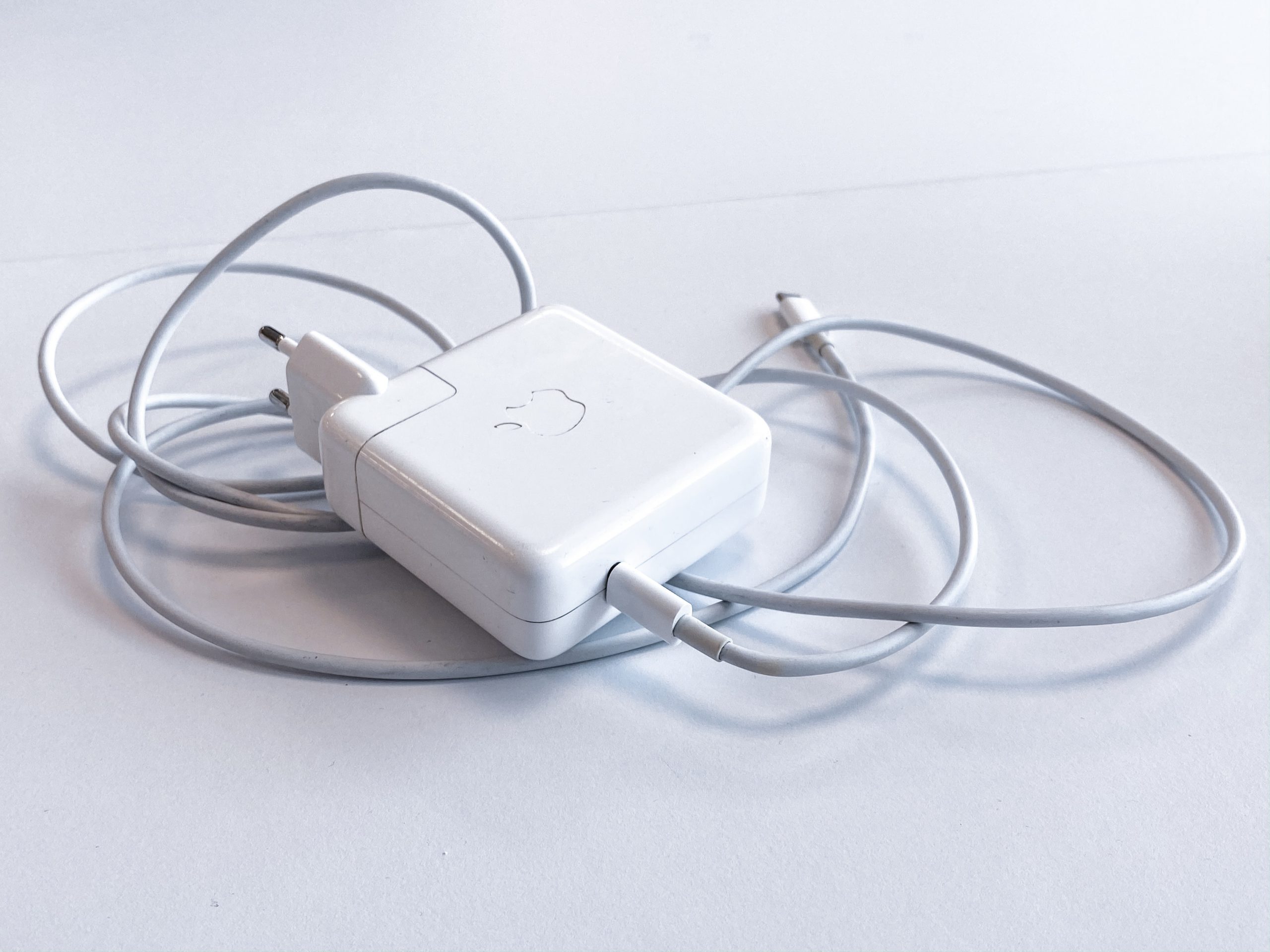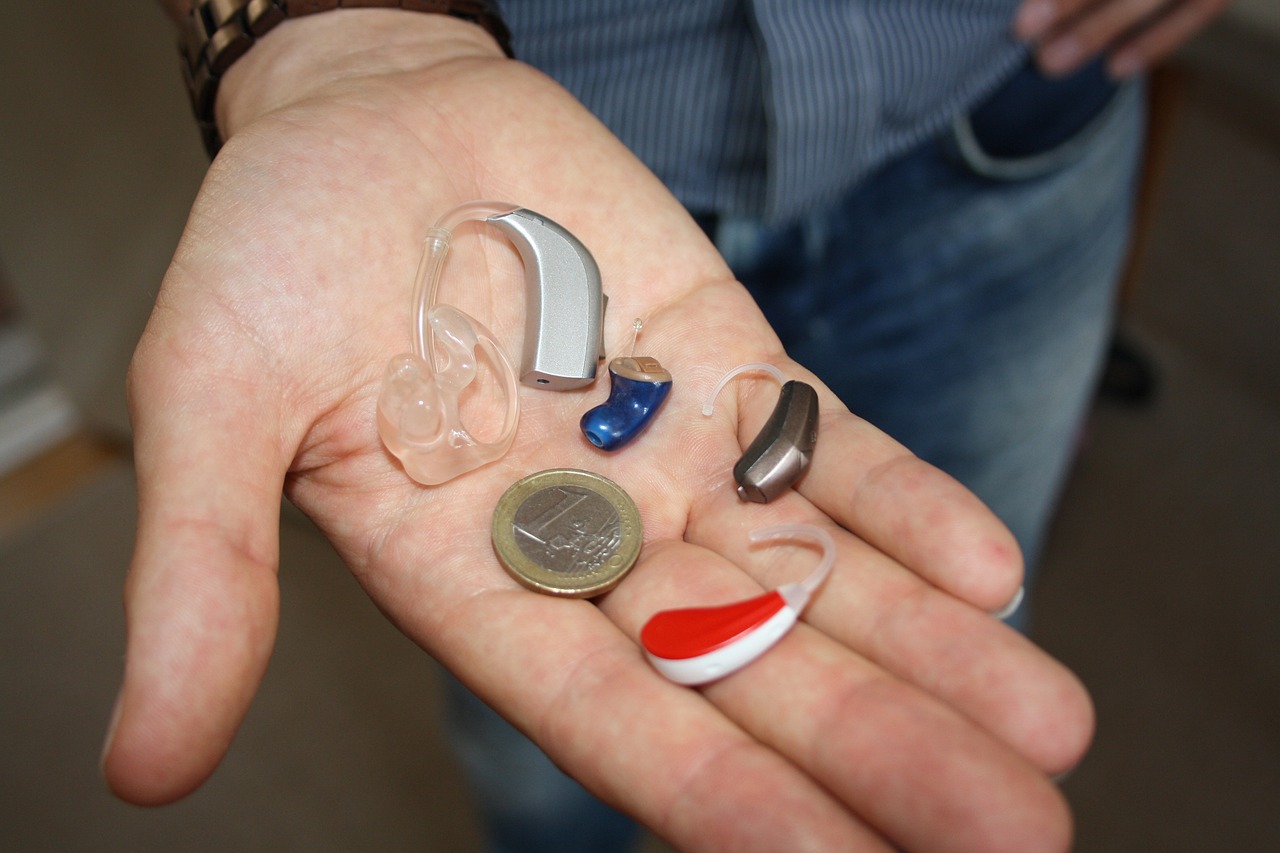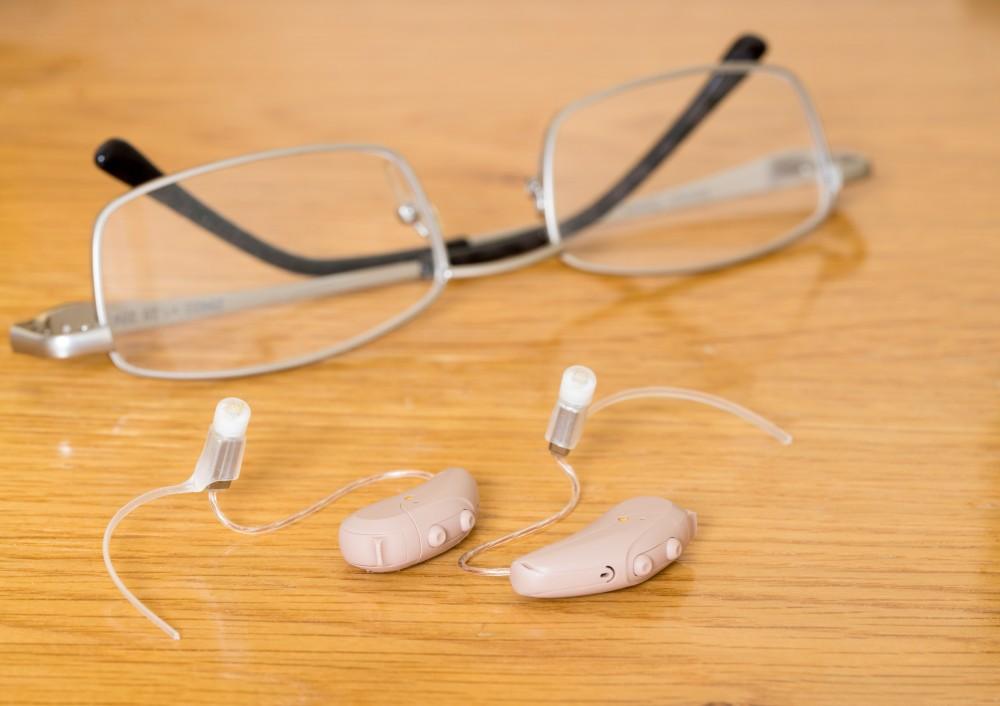
This article has been audited and reviewed by Dr. Ben Thompson, an audiologist and tinnitus expert. For more information about Dr. Thompson, click his name or read his bio below the article!
People who wear hearing aids and glasses, we’re sure you’ve grappled with the annoyance of having your hearing aids and glasses clash on the side of your head. Especially when it happens daily, wearing a hearing aid with glasses can quickly become a source of irritation.
In addition, due to the current Covid 19 pandemic, wearing a face mask has become a necessity for many people as well. The combination of wearing hearing aids, glasses, and masks can create quite the battlefield on your head.
Contents
Problems with Wearing Hearing Aids, Glasses, and Masks
The compatibility of the hearing aids and all your other wearables depends primarily on the model, shape, and size of the device.
Some hearing aids are so small that they fit entirely in the ear, which in turn does not affect how you wear your glasses. Making wearing hearing aids, glasses, and masks slightly easier.
However, some models like the popular Behind-the-Ear are an external device that rests above the ear where the eyeglass frame should be or the mask loops around. You can either wear glasses over your hearing aid or have the hearing aid pass through the glasses.
There are problems with either of these options, though.
When you put your glasses on top of your hearing aids, the glasses will be substantially more prone to falling off of your face. Because the arms of the glasses are supposed to hug alongside your head, if there is not enough tension there the only force helping the glasses stay on your head is gravity. The moment you look down or run, the glasses will most likely fall off. Neck-straps are an option, but many people instead choose to pass the glasses through the hearing aid.
Bypassing your glasses through the hearing aid, the hearing aid will press against them and be securely intact and likely not to fall from casual movement. What you sacrifice in exchange for security, however, is comfort. Because glasses are designed to hug the head with just the right amount of force, the added pressure from your hearing aids can impact the blood circulation behind your ears and cause headaches.
For masks, the straps can often become tangled in the hearing aid and cause the hearing aid to go flying from your head when removing them – a possibly expensive mistake.
The Solution to Comfortably Wear Hearing Aids and Glasses
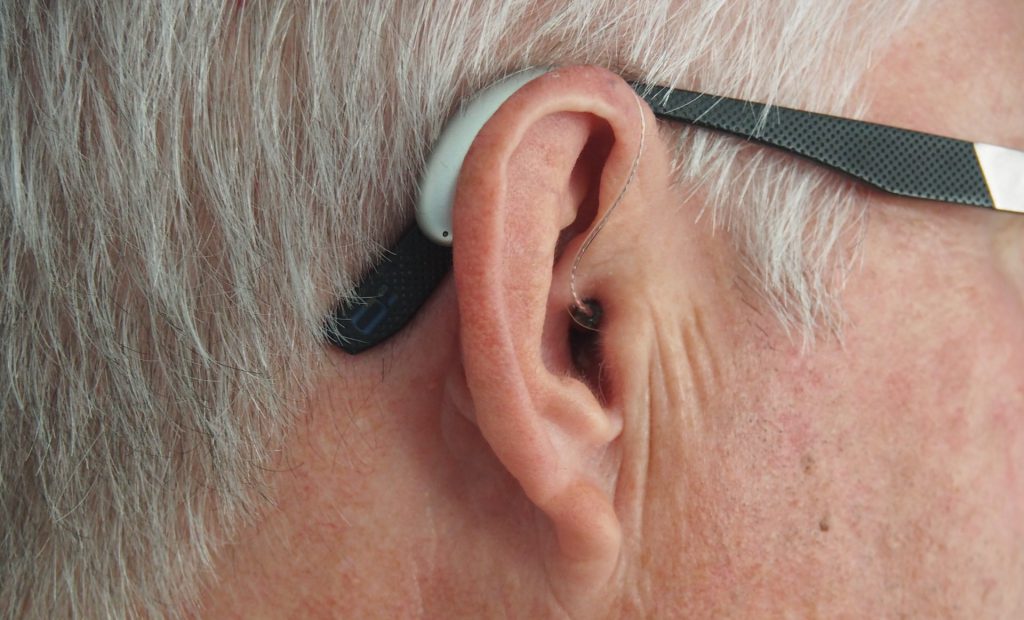
Picking the hearing aids that best suit your needs
Although wearing hearing aids is about mitigating the effects of hearing loss, it is also about being able to wear it every day. Feeling uncomfortable about wearing your hearing aids will most likely lead you to not wear them as often, so picking the right kind of hearing aids is very important!
Consider In-the-Ear (ITE) models that fit directly into the opening of the ear canal with nothing sitting behind the ear. With how minimal the device is, it will not obstruct your glasses or mask and be more discreet.
The major downside of ITE hearing aids is something called the “occlusion effect,” where the hearing aid blocks your ear and reduces sound quality for most kinds of hearing loss (when compared to receiver-in-canal hearing aids).
Furthermore, smaller devices most of the time mean smaller batteries and fewer features, however, so be sure to weigh in all these aspects before you purchase hearing aids.
Tips For Wearing Behind-the-Ear Models (BTE)
As we mentioned earlier in the article, wearing behind the ear hearing aids and glasses can be a challenge. There are a few things you can do to make it easier, however!
For one, practice removing your glasses by pulling them forward with both hands instead of up with one; this movement is less likely to knock off your hearing aid.
While the standard size BTE hearing aid will still work with many glasses and ears, you can consider a relatively new style called mini BTE. The part that fits behind the ear is a lot smaller for enhanced comfort and a less noticeable appearance. Most specialists will offer trial periods, so try all of them out before committing to one!
Finally, get used to putting your glasses first and then your hearing aids. You can maneuver your hearing aid around the arm of your glasses, which sits a little more rigidly. Look in the mirror after positioning the hearing aid so you know it looks natural and isn’t hanging off of the outer part of your ear.
Hearing Aid Glasses
Still, for those who tend to remove their glasses often, it seems like there may be no true solution.
Enter, hearing aid glasses!
As the name implies, these spectacles have hearing aids integrated into the frames or the arms of a pair of glasses. Hearing aid glasses are most commonly associated with “bone conduction” (where sound is transmitted via vibrations directly to the inner ear) fittings, but some air conduction (where sound is transmitted via air conduction through the ear) spectacle hearing aids exist.
It is worth noting that this combination device does mean that when you remove your glasses for any reason, the hearing amplification is removed as well. Any faults with the hearing aid or lenses may mean losing out on improved hearing and vision at the same time.
Hearing aid glasses are also rare and unlikely to be found at your local audiologist’s clinic.
Wearing Hearing Aids and Face Masks
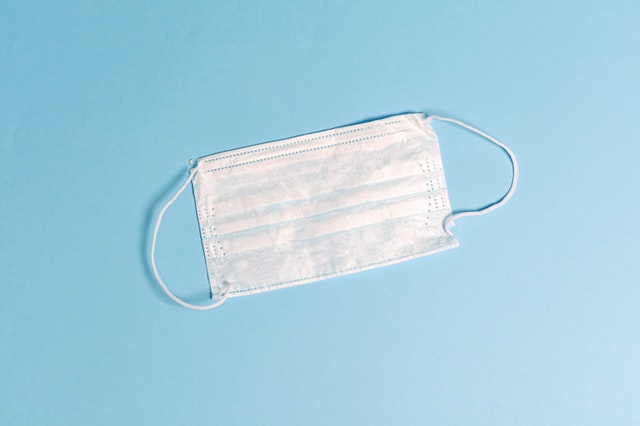
The accessory that no one saw coming, face masks have become as much of a necessity as a shirt or shoes when leaving the house.
For those with hearing aids or hearing loss, not only do masks make conversations and communication more difficult, but they also make physically wearing hearing aids more difficult as well. When the loops become tangled in the hearing aid, they often become difficult to remove and can yank out the hearing aid as well when removed too hastily.
Use Face Masks That Tie or Loop Behind The Head
Available on Amazon and all manner of other retailers, these masks avoid looping around the ear to keep them away and uninvolved with your hearing aids.
Face Mask Straps
Rather than purchasing a new mask, you can instead modify your existing one using a face mask strap to create the same effect! There are dozens of options available online in all manner of colors and designs, so finding one that fits your style should be easy.
Tie Your Hair Back!
For those of you with long hair, you may have a natural and easy solution as well! Tying your hair into side buns gives you a new place to hook the loops of your mask. Other hairstyles like ponytails can also be used alongside face mask extenders and other accessories for a stylish and great look as well.
Be Aware of Where You Take Your Mask Off
While alternatives are good and all, sometimes you just won’t have the option. In those cases, if possible try to remove your mask as carefully as possible and only when inside and in an enclosed area. If you do happen to drop it, it will be easy to find in such a location.
In Conclusion…
It may seem like hearing aids, glasses, and masks are destined to eternally struggle. As you’ve hopefully learned, however, there are still steps and methods you can take to help avoid the clutter and tangle around your ears.
If there is anyone who can help you find the best pair of hearing aids, however, it is your audiologist. Be sure to talk to them about your lifestyle honestly so they can accurately suggest the best type of hearing aids.
Article edited by Dr. Ben Thompson – Au.D. (Audiologist)

Dr. Ben Thompson is an audiologist and tinnitus expert. Dr. Thompson is the founder of Treblehealth.com. He decided to specialize in tinnitus management because of his interests in mindfulness, music and psychology. He completed his residency at University of California at San Francisco (UCSF) and is a past board member of the California Academy of Audiology.
Via telehealth, Dr. Thompson provides tinnitus retraining therapy online. He hosts a YouTube channel, podcast, and tinnitus group coaching program to help individuals with hearing loss and tinnitus.
The information in this guide has been written using the following reliable sources:
https://hearingexpertwirral.co.uk, www.connecthearing.com.au, https://beltonetristate.com, www.hiddenhearing.org, www.hiddenhearing.co.uk


